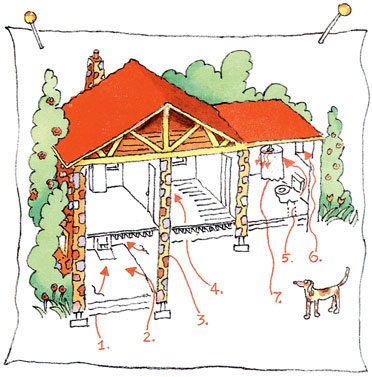
Radon is a radioactive gas. It comes from the natural decay of uranium that is found in nearly all soils. It typically moves up through the ground to the air above and into your home through cracks and other holes in the foundation. Your home traps radon inside, where it can build up.
Many people don’t realize that any home may have a radon problem. This means homes that are new or old, those that are well-sealed or drafty, and homes with or without basements can have high levels of radon. Right now I’m living in a southern state and people just dismiss the idea that a home without a basement is automatically free of potential radon problems. My goal is to educate people that the indoor air within any home can have a high level of radon, which is very unhealthy.
So just how does radon get into a home? This graphic provided in an EPA publication entitled “A Citizens Guide To Radon” shows us the variety of paths that radon can travel to enter a home.
Match the points of entry below with the numbers on the graphic to find 6 of the ways that radon can sneak into our home.
1. Cracks in solid floors
2. Construction joints
3. Cracks in walls
4. Gaps in suspended floors
5. Gaps around service pipes
6. Cavities inside walls
Nearly 1 out of every 15 homes in the U.S. is estimated to have elevated radon levels, and are found in homes in every state. Is your home one of them? The only way to know for sure is to test your home for radon!


